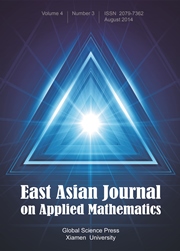No CrossRef data available.
Article contents
Optimization of the Multishift QR Algorithm with Coprocessors for Non-Hermitian Eigenvalue Problems
Published online by Cambridge University Press: 28 May 2015
Abstract
The multishift QR algorithm is efficient for computing all the eigenvalues of a dense, large-scale, non-Hermitian matrix. The major part of this algorithm can be performed by matrix-matrix multiplications and is therefore suitable for modern processors with hierarchical memory. A variant of this algorithm was recently proposed which can execute more computational parts by matrix-matrix multiplications. The algorithm is especially appropriate for recent coprocessors which contain many processor-elements such as the CSX600. However, the performance of the algorithm highly depends on the setting of parameters such as the numbers of shifts and divisions in the algorithm. Optimal settings are different depending on the matrix size and computational environments. In this paper, we construct a performance model to predict a setting of parameters which minimizes the execution time of the algorithm. Experimental results with the CSX600 coprocessor show that our model can be used to find the optimal setting.
Information
- Type
- Research Article
- Information
- Copyright
- Copyright © Global-Science Press 2011

